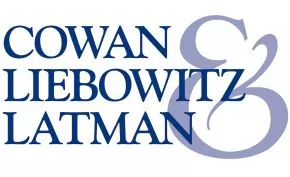If a mark is in active use only by your operating company, but a registration of the mark is owned by its subsidiary, special steps may be necessary to register that mark, or even to preserve your exclusive rights in it.
Background
A mark signifies that goods or services come from a single source. The usual situation is that the mark is owned and used by the same company—the single source.
The Trademark Act permits an applicant or registrant to rely on use of the mark by a "related company" - defined as "any person whose use of a mark is controlled by the owner of the mark with respect to the nature and quality of the goods or services on or in connection with which the mark is used."
When the owner of a mark licenses another company to use its mark, the license is legally effective for trademark purposes only if the owner controls the nature and quality of the use of the mark by the licensee. That controlled use is deemed to inure to the benefit of the owner, which maintains the owner as the single source.
Parent Owner/Subsidiary User. Sometimes a holding company with no operations will own a mark that is used only by its operating subsidiary without a written license. Since a parent is deemed to control the activities of its subsidiary simply by virtue of stock ownership, even if there is no written license and no other steps are taken to exercise quality control, the subsidiary's use is deemed to inure to the benefit of the parent, which again maintains the parent owner as the single source.
Subsidiary Owner/Parent User. The reverse situation may occur: a parent may organize a subsidiary as a holding company to own marks used solely by the operating parent. For example, this arrangement may occur when a company seeks to benefit from state laws that do not tax royalties received by a local company for the use of its intellectual property. Usually, there is a written license agreement providing for the payment of royalties to the subsidiary for the parent's use of the mark, and also providing for quality control by the subsidiary over the parent's use of the mark. Often the officers of the parent and subsidiary are the same individuals. Even if there is no written license agreement, but the officers clearly act for the subsidiary to control the nature and quality of the parent's use of the mark, a license may be implied. The parent's use will be deemed to inure to the benefit of the subsidiary, again maintaining the subsidiary owner as the single source.
What if there is no written license agreement between the subsidiary and the parent, and it is not clear that the common officers represent the subsidiary in exercising quality control over the parent's use of the mark? In that situation, the parent's use of the mark may be held to be uncontrolled and independent of the subsidiary, and the mark and its ownership rights might be jeopardized because the subsidiary would not be considered the single source of goods or services sold under the mark.
Case in Point
Here is a case presenting that situation (with complicated facts simplified here). Derma Pen, LLC originally registered the mark DERMAPEN for skin treatment devices, but it ceased to sell products under that mark on January 9, 2015. It assigned the mark and registration to Michael E. Anderer, a creditor ("Anderer"). Anderer thereafter assigned the mark and registration to Derma Pen IP Holdings LLC which was solely a holding company with no operations. FD Holdings, Inc., the holding company's parent, was the operating company that took over the sales and marketing of products under the DERMAPEN mark.
A distributor of a competitor's device, sold under the DERMAPEN 4 trademark in various non-U.S. countries, intended to sell that device in the U.S. The distributor sought to cancel the U.S. trademark registration of DERMAPEN on the ground, among others, that the mark had been abandoned by the holding company based on its nonuse of the mark in commerce for a period of more than three consecutive years, without an intent to resume use. Under the Trademark Act, this would constitute an abandonment of the mark resulting in cancellation of its registration which would clear at least this impediment to the sale of the DERMAPEN 4 device in the U.S.
The Trademark Trial and Appeal Board (TTAB) found the record replete with evidence of the parent's use of the DERMAPEN mark in U.S. commerce, but none of those sales or other marketing efforts were attributable to the subsidiary because it was merely a holding company with no operations. As a result, the subsidiary could demonstrate its use of the mark, or its intent to resume its use, only if the use by the parent was deemed to inure to the benefit of its subsidiary.
For various procedural reasons, the record did not include competent evidence of a written license agreement between the companies. However, Anderer argued that he was the operating manager of both companies. He further stated that he had been in control of all business decisions since the transfer of the mark to the holding company, including supervising, managing, and overseeing the quality of any goods bearing the mark.
The TTAB recognized Anderer's common position, but it found that there was no specific evidence as to how he controlled the nature and quality of the goods sold by the parent. Moreover, the source-identifying information on marketing materials identified the mark's owner as the parent, not the subsidiary. The TTAB concluded that Anderer exercised control over the nature and quality of the goods sold under the mark solely in his capacity as the manager of the parent, and not on behalf of the subsidiary.
The subsidiary tried to argue that the "unity of ownership" of the two affiliated companies constituted a single source. It based this argument on In re Wella A.G., 858 F.2d 725 (Fed. Cir. 1988). In that case, the U.S. Court of Appeals for the Federal Circuit held that a German parent could register the mark WELLASTRATE in the U.S., even though that mark was similar to a family of WELLA marks its subsidiary had previously registered in the U.S. The Federal Circuit had reasoned that the WELLA family of marks connoted to consumers a single source for all WELLA products so there was no likelihood of confusion. In rejecting this argument in the instant case, the TTAB held that the likelihood of confusion issue in the Wella case was clearly distinguishable from the abandonment issue.
The TTAB held, on the record in this case, that the use by the parent did not inure to the benefit of the subsidiary. Accordingly, since the subsidiary owner of the registration could not benefit from the mark's use by its parent, the TTAB held the mark abandoned and granted the petition to cancel its registration.
DP Derm, LLC v. Derma Pen IP Holdings LLC, Cancellation No. 92073045 (T.T.A.B. April 3, 2024).
Author's Note:
The TTAB pointed out that this proceeding was just one of many that had taken place between the parties or their affiliates over the preceding ten years concerning the rights to the DERMAPEN mark. This controversy may continue. For example, the subsidiary owner of the registration may choose either to appeal this decision to the U.S. Court of Appeals for the Federal Circuit or to file a civil action seeking a new review by a federal district court on a record supplemented by additional evidence to cure various factual deficiencies found by the TTAB.
However, this decision suggests a practical caution: When a holding company subsidiary without operations owns a mark used only by its operating company parent, it should take appropriate steps to avoid a legal challenge and a possible unintended loss of rights:
- Have a written trademark license agreement between the parent and its subsidiary having a clause permitting quality control by the subsidiary.
- Put in place procedures demonstrating how the quality control is exercised over the parent on behalf of the subsidiary, whether or not there is a written trademark license agreement or common officers. This may involve periodic reports by an officer of the parent listing the quality control procedures, complaints, and remedial steps taken by the parent. Attach these reports to the subsidiary's minutes with resolutions by the subsidiary's directors or members approving these reports. Alternatively, there may be periodic memos from an officer of the subsidiary to the subsidiary's file stating the steps taken on behalf of the subsidiary to review the nature and quality of the parent's use of the mark.
- The subsidiary should issue any trademark licenses granted to third parties. If a trademark license is granted to a third party by the parent rather than by the subsidiary, provide for direct quality control by the subsidiary over the uses by the third party, or have the subsidiary appoint the parent as its agent for the limited purpose of exercising quality control over the third party's uses of the mark.
- Identify the subsidiary as the owner of the mark on packaging and marketing materials.
The content of this article is intended to provide a general guide to the subject matter. Specialist advice should be sought about your specific circumstances.
We operate a free-to-view policy, asking only that you register in order to read all of our content. Please login or register to view the rest of this article.


